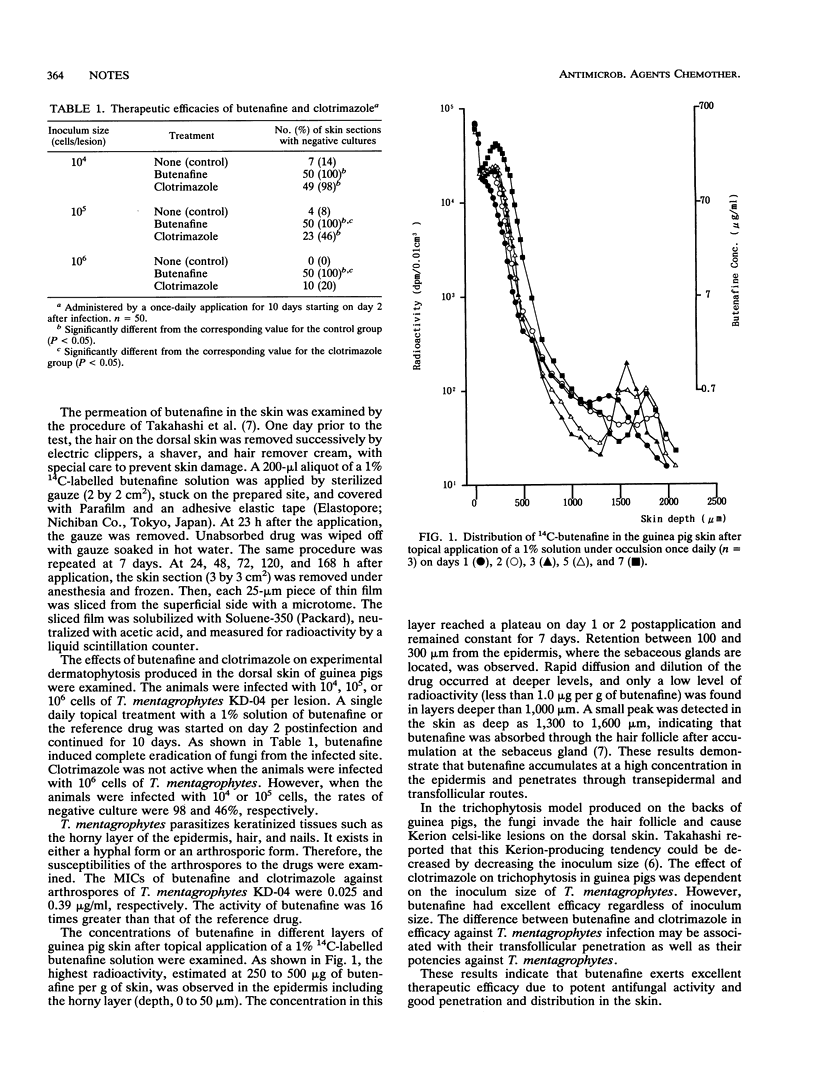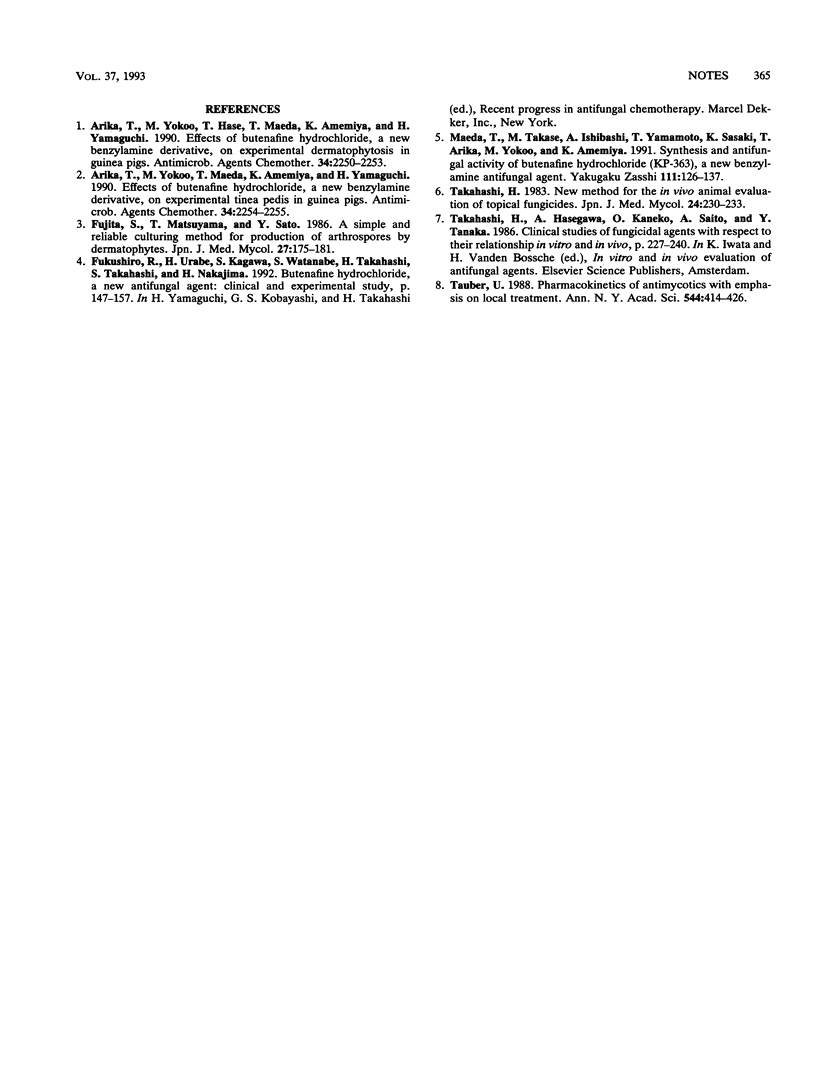Abstract
We examined anti-Trichophyton mentagrophytes activity, cutaneous penetration, and skin localization of butenafine, a novel benzylamine antifungal agent. The following results were obtained. (i) In the guinea pig dorsal skin trichophytosis model, butenafine produced complete eradication of fungi from infected sites. Clotrimazole was active when animals were infected with 10(4) or 10(5) cells but was almost inactive when the inoculum size was 10(6) cells. (ii) The MICs of butenafine and clotrimazole against arthrospores of T. mentagrophytes KD-04 were 0.025 and 0.39 microgram/ml, respectively. (iii) When 0.2 ml of a 1% 14C-butenafine solution was applied for 23 h/day for 7 days, high radioactivity corresponding to 250 to 500 micrograms of butenafine per g of skin in the epidermis, including the horny layer, was observed. (iv) Butenafine penetrates through transepidermal and transfollicular routes. The excellent therapeutic efficacy of butenafine on experimental dermatophytosis may be attributed to its low MIC and good penetration and distribution in the horny layer and hair follicles, where fungi reside.
Full text
PDF


Selected References
These references are in PubMed. This may not be the complete list of references from this article.
- Arika T., Yokoo M., Hase T., Maeda T., Amemiya K., Yamaguchi H. Effects of butenafine hydrochloride, a new benzylamine derivative, on experimental dermatophytosis in guinea pigs. Antimicrob Agents Chemother. 1990 Nov;34(11):2250–2253. doi: 10.1128/aac.34.11.2250. [DOI] [PMC free article] [PubMed] [Google Scholar]
- Arika T., Yokoo M., Maeda T., Amemiya K., Yamaguchi H. Effects of butenafine hydrochloride, a new benzylamine derivative, on experimental tinea pedis in guinea pigs. Antimicrob Agents Chemother. 1990 Nov;34(11):2254–2255. doi: 10.1128/aac.34.11.2254. [DOI] [PMC free article] [PubMed] [Google Scholar]
- Maeda T., Takase M., Ishibashi A., Yamamoto T., Sasaki K., Arika T., Yokoo M., Amemiya K. [Synthesis and antifungal activity of butenafine hydrochloride (KP-363), a new benzylamine antifungal agent]. Yakugaku Zasshi. 1991 Feb;111(2):126–137. doi: 10.1248/yakushi1947.111.2_126. [DOI] [PubMed] [Google Scholar]
- Täuber U. Pharmacokinetics of antimycotics with emphasis on local treatment. Ann N Y Acad Sci. 1988;544:414–426. doi: 10.1111/j.1749-6632.1988.tb40439.x. [DOI] [PubMed] [Google Scholar]


